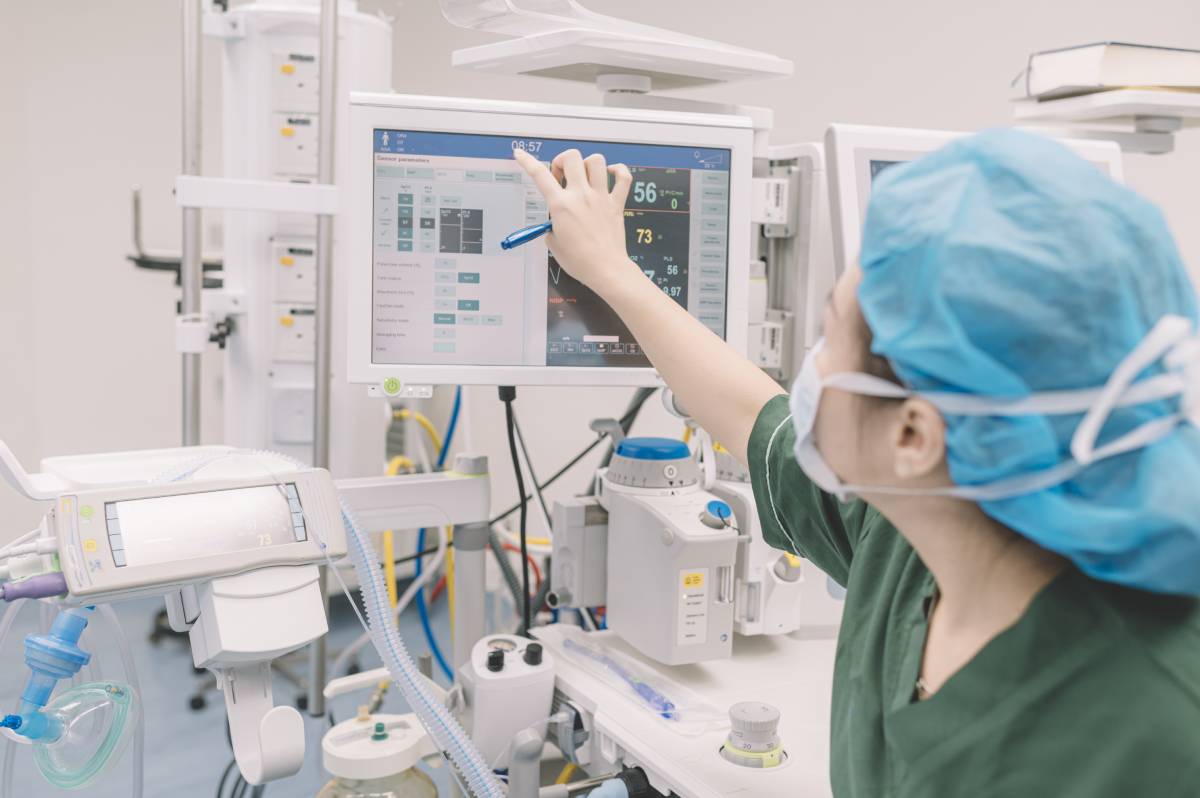
Hypertension can dramatically increase surgical patients’ rates of morbidity and mortality. Preoperative hypertension increases a patient’s probability of experiencing cardiovascular complications during surgery by 35% [1]. Perioperative and postoperative hypertension can result in bleeding, myocardial infarctions, and adverse cerebrovascular events [2]. To manage intraoperative hypertension, clinicians must monitor patients’ blood pressure, while implementing regimens that account for the risk of cardiovascular events, possible blood pressure fluctuations, and preexisting medications [1].
Clinicians treating hypertensive surgical patients must avoid exacerbating preexisting hypertension, which requires a comprehensive understanding of high-risk events. Perioperatively, hypertension can occur or be worsened due to insufficient analgesia administration, anesthesia induction, extubation, volume overload, and clonidine withdrawal syndrome [1]. Patients undergoing intraperitoneal, abdominal aortic, peripheral vascular, or carotid surgery are most likely to experience hypertensive events [1]. Some studies have reported that anesthesia information management systems (AIMSs) are effective in managing hypertension intraoperatively, but this is not always true due to current technological limitations [3].
While lifestyle modifications may be preferable to pharmacology in driving long-term improvements, little can be done in that regard once surgery has begun [4]. Consequently, pharmacology is an essential aspect of perioperative hypertension management. Patients already taking antihypertensive medication should continue doing so, including on the day of surgery, if such drugs do not lead to negative interactions with drugs needed for surgery and anesthesia [1]. During surgery, clinicians should choose pharmacologic agents according to a patient’s comorbidities [5]. For example, patients with coronary artery disease may benefit most from beta-blockers, combined with diuretics or angiotensin-converting enzyme inhibitors [5]. Intraoperative use of beta-blockers can reduce patients’ 30-day and 1-year mortality [5]. Angiotensin-converting enzyme inhibitors and angiotensin receptor blockers are not associated with higher mortality rates or complications following noncardiac surgery, suggesting that they are safe to continue administering in the surgical setting [5]. The goal of pharmacology therapy is to stabilize blood pressure at <130/80 mm Hg [5].
Depending on the anesthetic agents present during surgery, designing a safe and appropriate perioperative pharmacological regimen may become more difficult. Anesthesiologists should be aware of the anesthetic implications of each class of antihypertensive medication [6]. For instance, diuretics can promote dehydration, hypokalemia (if they are not potassium-sparing), and hyperkalemia (if they are potassium-sparing) [6]. Angiotensin II receptor antagonists can lead to refractory hypotension during induction and rebound hypertension once use has been discontinued [6]. Angiotensin-converting enzyme inhibitors (ACEIs) are more safely administered on the day of surgery if deep sedation is planned [6]. ACEIs may cause angioedema, but the risk is low [6].
If a patient experiences a hypertensive event during surgery, physicians should choose a fast-acting, safe, easily titrated, inexpensive, and predictable antihypertensive agent [2]. Clinicians should seek to gradually reduce blood pressure by 10 to 15% within the first hour [2]. Following that initial period, blood pressure should continue to decrease, the goal being to reach 160/100 mm Hg within the next two to six hours [2]. In these events, esmolol, nicardipine, fenoldopam, and labetalol are the most commonly used medications [2]. Parenteral agents can also be used, but newer medications appear safer during hypertensive emergencies [2]. While clonidine and ACE inhibitors are not easily titratable and have long-lasting effects, they may also be appropriate in urgent situations [2].
Ultimately, intraoperative hypertension requires clinicians to strike a delicate balance between various pharmacological considerations. Because hypertension increases mortality and morbidity, physicians should aim to design the optimal plan for each individual patient.
References
[1] M. Koutsaki et al., “Evaluation, risk stratification and management of hypertensive patients in the perioperative period,” European Journal of Internal Medicine, vol. 69, p. 1-7, November 2019. [Online]. Available: https://doi.org/10.1016/j.ejim.2019.09.012.
[2] J. Varon and P. E. Marik, “Perioperative hypertension management,” Vascular Health and Risk Management, vol. 4, no. 3, p. 615-627, June 2008. [Online]. Available: https://doi.org/10.2147/vhrm.s2471.
[3] B. G. Nair et al., “Anesthesia Information Management System-Based Near Real-Time Decision Support to Manage Intraoperative Hypotension and Hypertension,” Anesthesia & Analgesia, vol. 118, no. 1, p. 206-214, January 2014. [Online]. Available: https://doi.org/10.1213/ANE.0000000000000027.
[4] R. Oza and M. Garcellano, “Nonpharmacologic Management of Hypertension: What Works?,” American Family Physician, vol. 91, no. 11, p. 772-776, June 2015. [Online]. Available: https://www.aafp.org/afp/2015/0601/afp20150601p772.pdf.
[5] W. S. Aronow, “Management of hypertension in patients undergoing surgery,” Annals of Translational Medicine, vol. 5, no. 10, p. 227, May 2017. [Online]. Available: https://doi.org/10.21037/atm.2017.03.54.
[6] R. Yancey, “Anesthetic Management of the Hypertensive Patient: Part 1,” Anesthesia Progress, vol. 65, no. 2, p. 131-138, Summer 2018. [Online]. Available: https://doi.org/10.2344/anpr-65-02-12.

